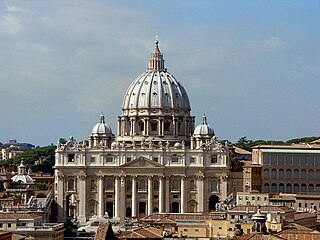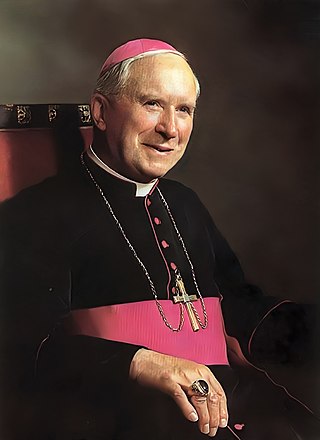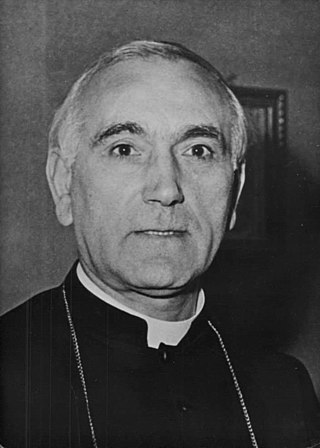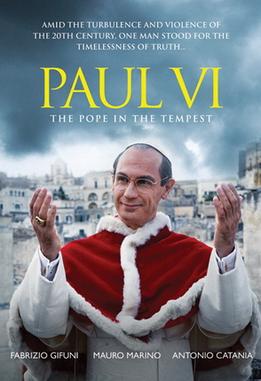The Central Preparatory Commission was the body that co-ordinated the preparation of the schemas for the Second Vatican Council. It was established by Pope John XXIII on June 5, 1960. It had 120 members, including cardinals and bishops, amongst them was Cardinal Giovanni Battista Montini (the future Pope Paul VI), Archbishop Marcel Lefebvre, and Cardinal Ottaviani who chaired the Commission.
It had been expected that the members of the preparatory commissions, where the Roman Curia was heavily represented, would be confirmed as the majorities on the conciliar commissions. [1] [2] Senior French Cardinal Achille Liénart addressed the council, saying that the bishops could not intelligently vote for strangers. He asked that the vote be postponed to give all the bishops a chance to draw up their own lists. German Cardinal Josef Frings seconded that proposal, and the vote was postponed. [2] The very first meeting of the council adjourned after only fifteen minutes. [3]

Pope John XXIII was head of the Catholic Church and sovereign of the Vatican City State from 28 October 1958 until his death in June 1963. He was among 13 children born to Marianna Mazzola and Giovanni Battista Roncalli in a family of sharecroppers who lived in Sotto il Monte, a village in the province of Bergamo, Lombardy. He was ordained to the priesthood on 10 August 1904 and served in a number of posts, as nuncio in France and a delegate to Bulgaria, Greece and Turkey. In a consistory on 12 January 1953 Pope Pius XII made Roncalli a cardinal as the Cardinal-Priest of Santa Prisca in addition to naming him as the Patriarch of Venice. Roncalli was unexpectedly elected pope on 28 October 1958 at age 76 after eleven ballots. Pope John XXIII surprised those who expected him to be a caretaker pope by calling the historic Second Vatican Council (1962–1965), the first session opening on 11 October 1962, which is now his feast.

Pope Paul VI was head of the Catholic Church and sovereign of the Vatican City State from 21 June 1963 to his death in August 1978. Succeeding John XXIII, he continued the Second Vatican Council, which he closed in 1965, implementing its numerous reforms. He fostered improved ecumenical relations with Eastern Orthodox and Protestant churches, which resulted in many historic meetings and agreements. In January 1964, he flew to the Hashemite Kingdom of Jordan. This was the first time a reigning pontiff had flown on an airplane, the first papal pilgrimage to the Holy Land, and the first time a Pope had left Italy in more than a century.

The Second Ecumenical Council of the Vatican, commonly known as the Second Vatican Council, or Vatican II, was the 21st ecumenical council of the Catholic Church. The council met in Saint Peter's Basilica in Vatican City for four periods, each lasting between 8 and 12 weeks, in the autumn of each of the four years 1962 to 1965. Preparation for the council took three years, from the summer of 1959 to the autumn of 1962. The council was opened on 11 October 1962 by John XXIII, and was closed on 8 December 1965 by Paul VI.
Dignitatis humanae is the Second Vatican Council's Declaration on Religious Freedom. In the context of the council's stated intention "to develop the doctrine of recent popes on the inviolable rights of the human person and the constitutional order of society", Dignitatis humanae spells out the church's support for the protection of religious liberty. It set the ground rules by which the church would relate to secular states.

Nostra aetate, or the Declaration on the Relation of the Church with Non-Christian Religions, is an official declaration of the Vatican II, an ecumenical council of the Catholic Church. It was promulgated on 28 October 1965 by Pope Paul VI. Its name comes from its incipit, the first few words of its opening sentence, as is tradtion. It passed the Council by a vote of 2,221 to 88 of the assembled bishops.

Marcel François Marie Joseph Lefebvre was a French Catholic archbishop who greatly influenced modern traditional Catholicism. In 1970, five years after the close of the Second Vatican Council, he founded the Society of Saint Pius X (SSPX), a community to train seminarians in the traditional manner, in the village of Écône, Switzerland. In 1988, Pope John Paul II declared that Archbishop Lefebvre had "incurred the grave penalty of excommunication envisaged by ecclesiastical law" for consecrating four bishops against the pope's express prohibition but, according to Lefebvre, in reliance on an "agreement given by the Holy See... for the consecration of one bishop."

Giuseppe Siri was an Italian cardinal of the Catholic Church who served as Archbishop of Genoa from 1946 to 1987, and was elevated to the rank of cardinal in 1953. He was a protege of Pope Pius XII. He was considered a likely candidate to succeed Pius XII, John XXIII, Paul VI, and John Paul I.
Papabile is an unofficial Italian term first coined by Vaticanologists and now used internationally in many languages to describe a Catholic man, in practice always a cardinal, who is thought a likely or possible candidate to be elected pope.

Giuseppe Pizzardo was an Italian cardinal of the Catholic Church who served as prefect of the Congregation for Seminaries and Universities from 1939 to 1968, and secretary of the Holy Office from 1951 to 1959. Pizzardo was elevated to the cardinalate in 1937.

A papal conclave was held from 19 to 21 June 1963 to elect a successor of John XXIII, who had died on 3 June 1963. The cardinal electors assembled in Rome and, after six ballots, elected Cardinal Giovanni Battista Montini, Archbishop of Milan. He accepted the election and took the name Paul VI. Paul VI's coronation on 30 June was the last papal coronation to date.

Josef Richard Frings, was a German Cardinal of the Catholic Church. He served as Archbishop of Cologne from 1942 to 1969. Considered a significant figure in Catholic resistance to Nazism, he was elevated to the cardinalate in 1946 by Pope Pius XII.

Alfredo Ottaviani was an Italian cardinal of the Catholic Church. Pope Pius XII named him cardinal in 1953. He served as secretary of the Holy Office in the Roman Curia from 1959 to 1966 when that dicastery was reorganised as the Congregation for the Doctrine of the Faith, of which he was pro-prefect until 1968.

Giovanni Colombo was an Italian Cardinal of the Roman Catholic Church. He served as Archbishop of Milan from 1963 to 1979 and was elevated to the rank of cardinal in 1965.

Carlo Confalonieri was an Italian cardinal of the Roman Catholic Church. He served as prefect of the Congregation for Bishops from 1967 to 1973, and dean of the College of Cardinals from 1977 until his death. Confalonieri was elevated to the cardinalate in 1958.

Achille Liénart was a French cardinal of the Roman Catholic Church. He served as Bishop of Lille from 1928 to 1968, and was elevated to the cardinalate in 1930.

The cardinal electors in the 1963 papal conclave numbered 82, of whom 80 participated. This papal conclave met from 19 to 21 June 1963. This list is arranged by region and within each alphabetically.

Joseph-Charles Lefèbvre was a French cardinal of the Roman Catholic Church. He served as Archbishop of Bourges from 1943 to 1969 and was made a cardinal in 1960.

Pierre Marie Joseph Veuillot was a Roman Catholic Cardinal and Archbishop of Paris.

Paul VI: The Pope in the Tempest is a 2008 Italian television movie directed by Fabrizio Costa. The film is based on real life events of Roman Catholic Pope Paul VI.
Ingravescentem aetatem is a document issued by Pope Paul VI, dated 21 November 1970. It is divided into 8 chapters. The Latin title is taken from the incipit, and translates to "advancing age". It established a rule that only cardinals who have not reached the age of 80 can participate in a conclave.